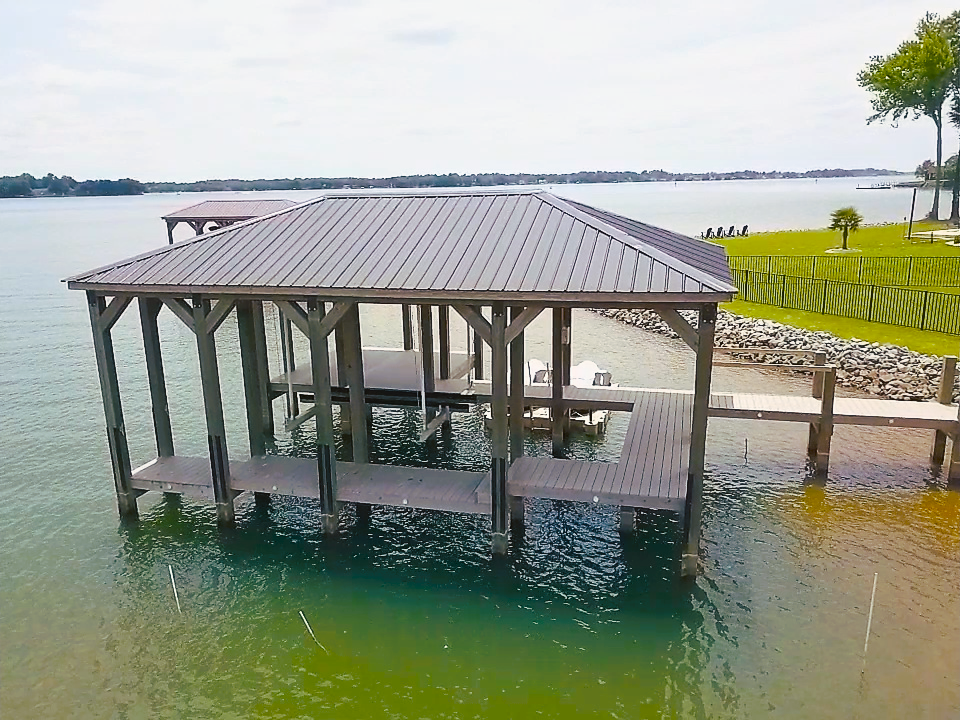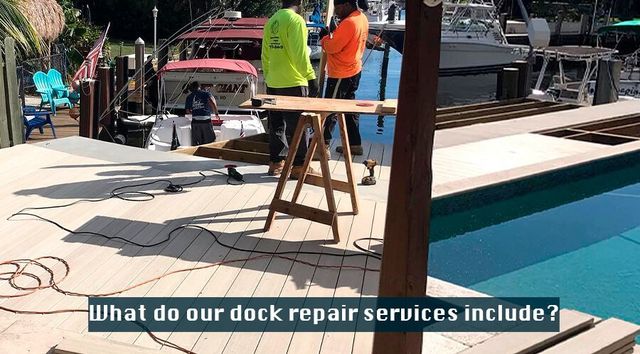Why Routine Maintenance Can Reduce Future Dock Repairs
Wiki Article
Reliable Dock Repair Service Techniques: Making Certain Architectural Honesty
Guaranteeing the structural stability of docks with effective repair strategies is critical for the longevity and safety and security of marine centers. Subsequently, choosing the best repair work materials, such as composite products and corrosion-resistant alloys, is essential for durability.Analyzing Dock Damages
Assessing dock damages is a vital primary step in making certain the structural honesty and safety of any type of docking center. This initial assessment includes a thorough inspection to determine both noticeable and hidden problems. Secret facets to examine include the dock's foundation, pilings, decking, and equipment. Each part must be scrutinized for signs of wear, rot, rust, or other types of deterioration that might endanger the architectural stability.Architectural designers or certified examiners normally do these evaluations utilizing specialized strategies and tools. For instance, undersea examinations could utilize sonar equipment or from another location ran vehicles (ROVs) to find immersed damage. Over water, aesthetic evaluations are complemented by utilizing dampness meters and various other diagnostic tools to uncover underlying problems not right away visible to the nude eye.

Picking Repair Service Products
Picking the appropriate repair materials is a critical action in the dock restoration process, one that directly influences the durability and performance of the repaired structure. Material selection should be driven by aspects such as environmental conditions, load-bearing requirements, and compatibility with existing dock components. Wood is a standard option for docks due to its natural strength and visual charm. Picking the ideal type of wood, such as pressure-treated lumber or naturally rot-resistant species like cedar or teak wood, is vital to stand up to water environments.Along with timber, composite products are progressively popular as a result of their toughness and low upkeep demands. Compounds, usually made from a blend of plastic and timber fibers, supply exceptional resistance to rot, insects, and UV damages. For metal anchors, choosing corrosion-resistant alloys such as galvanized steel or marine-grade light weight aluminum is important to protect against rust and make certain architectural stability in saline water problems.
Epoxy resins and marine-grade sealers are indispensable for repairing splits and securing joints, providing a water resistant obstacle and enhancing the dock's general toughness. By meticulously selecting top notch products, dock repairs can accomplish resilient outcomes, therefore securing versus future degradation and guaranteeing risk-free, trustworthy usage.
Architectural Reinforcement Techniques
Effective structural support strategies are essential in making certain the stability and longevity of dock repairs. One fundamental approach entails the usage of steel or composite reinforcement bars (rebar) within concrete structures. Rebar gives added tensile toughness, stopping fractures and dispersing lots much more uniformly. This approach is particularly reliable for anchors subjected to heavy loads or extreme environmental conditions.One more important strategy is the application of fiber-reinforced polymers (FRP) These materials offer high strength-to-weight proportions and superb resistance to corrosion, making them ideal for enhancing wood or concrete anchors. FRP can be applied in strips or sheets and adhered with epoxy materials to enhance architectural stability.
Bracing and securing systems likewise play an essential role in architectural reinforcement. Cross-bracing, utilizing metal or wood beam of lights, can counteract side forces, lowering persuading and activity. Anchoring systems, such as helical piers or driven piles, supply a stable structure by moving loads to much deeper, much more stable soil layers.
Last but not least, the combination of load-distribution plates can help distribute weight more uniformly throughout the dock's surface, minimizing localized stress and anxiety points. These strategies collectively make sure that docks stay secure and robust, with the ability of withstanding the roughness of their functional environment.
Advanced Repair Service Methods

One more sophisticated method includes underwater welding, which permits repair services to be carried out without the requirement to dewater the location. This method is particularly useful for dealing with structural issues in submerged dock parts, making certain marginal disturbance to procedures. Boosted welding methods, paired with robot systems, provide precision and integrity, therefore expanding the life-span of the dock.
Furthermore, cathodic security systems are implemented to stop deterioration in metal dock structures. By utilizing sacrificial anodes or impressed existing systems, these methods efficiently reduce the electrochemical procedures that bring about material wear and tear.
this website Last but not browse around this web-site least, progressed monitoring technologies, such as architectural health and wellness monitoring (SHM) systems, give real-time data on the condition of dock frameworks. These systems allow aggressive upkeep and timely treatments, eventually guaranteeing the long-term architectural integrity of the dock.
Upkeep and Prevention
Upkeep and prevention are basic ideas that underpin the long life and security of dock structures. Regular assessments are critical, permitting early discovery of wear and tear, possible weaknesses, and environmental influences. A positive strategy, involving routine look for corrosion, rot, and structural changes, mitigates expensive fixings and extends the dock's functional life.Safety nets need to include using safety layers to metal elements to defend against corrosion and making use of treated wood to withstand degeneration. Additionally, making sure correct drainage and ventilation can stop water buildup, which is a common root cause of structural deterioration. Including quality materials and adhering to maker guidelines throughout building and construction and repair phases likewise play vital duties in enhancing resilience.

Training personnel in dock maintenance ideal techniques makes sure constant application of safety nets. Leveraging technological breakthroughs, such as drones for examinations and sensors for real-time surveillance, can better boost maintenance efforts. By focusing on maintenance and prevention, dock proprietors can guarantee structural honesty, operational safety, and cost-efficient administration over the dock's life-span.
Final Thought
To conclude, preserving the architectural honesty of marine centers demands detailed dock repair techniques. Comprehensive evaluations making use of innovative tools discover both visible and hid problems, while the selection of proper repair service materials boosts resilience. Carrying out architectural reinforcement techniques addresses stress factors efficiently. Advanced fixing methods, combined with regular maintenance techniques, ensure the dock stays safe and operational under diverse ecological problems. Adopting these techniques significantly prolongs the life expectancy and capability of marine facilities.Guaranteeing the architectural stability of anchors via reliable fixing strategies is paramount for the longevity and safety of marine facilities.Selecting the suitable repair work materials is an essential step in the dock repair procedure, one that straight affects the long life and efficiency of the fixed framework.Reliable architectural support strategies are essential in ensuring the security and long life of dock fixings. By prioritizing upkeep and avoidance, dock owners can guarantee structural integrity, operational safety, and cost-effective management over the dock's lifespan.
In conclusion, maintaining the architectural stability of marine facilities necessitates thorough dock fixing strategies.
Report this wiki page